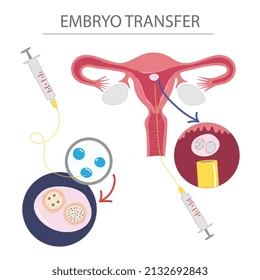According to Dr. Mohit Saraogi, a distinguished IVF doctor in Mumbai,
“This early post-transfer phase is crucial, even if subtle. Many physiological changes begin to occur that aren’t immediately visible, but they lay the groundwork for successful implantation.”
At Saraogi IVF Centre in Mumbai, you’ll find a blend of compassion, precision, and unmatched expertise. Under the guidance of Dr. Mohit Saraogi, the center has helped over 18,000 patients through personalized treatments, advanced reproductive technologies, and compassionate care.
Whether it’s IVF, ICSI, IMSI, or Frozen Embryo Transfer treatment in Mumbai, the seasoned team at Saraogi Hospital excels in tailoring plans that optimize results. At this renowned facility, patients gain access to the latest fertility innovations alongside the deep expertise of some of the most respected infertility specialists in India.
In this blog, we’ll discuss what to expect 3 days after Frozen Embryo Transfer, covering symptoms, dos and don’ts, and how to make this waiting time a little less daunting.
What symptoms can be expected 3 days after frozen embryo transfer?
At three days post-transfer, it’s too early for a pregnancy test, but your body may already be reacting to the implanted embryo. Here are the typical symptoms many women report:
- Mild Cramping:
Like menstrual cramping, these suggest changes in the uterus that may be implantation-related.
- Breast Tenderness:
A normal hormonal reaction, usually from progesterone supplementation.
- Fatigue:
An indication that your body is hormonally adjusting and potentially gearing up for early pregnancy.
Also referred to as implantation bleeding, this may happen when the embryo implants into the uterine lining.
- Bloating or Constipation:
From hormone medications, many feel gastrointestinal discomfort.
- Mood Swings:
Emotional changes may be caused by both stress and the flush of reproductive hormones.
- Increased Basal Body Temperature:
A few women experience a steady increase, commonly associated with progesterone activity.
These are positive signs after embryo transfer, but not having these signs doesn’t mean failure.
Are mild cramps or a wave of tiredness something to be concerned about? Let’s find out why these are more normal than you would have imagined.
Is mild cramping or fatigue normal at this stage post-transfer?
Yes, both are usually normal and do not need to worry about. Cramping, which is usually considered a negative symptom, may be a part of the 3 days embryo transfer implantation timeline. It’s usually the body’s reaction to the embryo nesting into the endometrial lining.
Fatigue is one of the common symptoms that arise early as a result of progesterone medication and bodily internal adaptations. The hormone mimics early pregnancy reactions, leading to a drop in energy levels and frequent dizziness.
According to Dr. Mohit Saraogi, an award-winning infertility specialist in Mumbai,
“Patients must understand that mild symptoms like fatigue or cramps are part of the hormonal environment we’re creating to support implantation. Unless they become severe or persist unusually, they are reassuring.”
Looking to boost your chances of successful implantation? Let’s discuss some essential tips to support your body during this crucial stage.
What should I do to support implantation during the early days after embryo transfer?
Boosting implantation chances involves small yet effective lifestyle habits. Here’s how to optimize conditions 3 days after frozen embryo transfer:
- Rest, But Not Complete Bed Rest: Light movement like walking improves blood flow to the uterus.
- Hydrate Well: Helps keep your system balanced and promotes cell activity.
- Maintain a Balanced Diet: Focus on warm foods, healthy proteins, and implantation-supportive nutrients like folate and zinc.
- Stress Management: Practice breathing exercises, meditation, or listen to relaxing music.
- Follow Medication Strictly: Especially progesterone and estrogen supplements that prepare your uterine lining.
- Avoid Hot Baths/Saunas: Heat exposure can adversely affect implantation.
- Sleep Well: Your body needs adequate rest for hormonal regulation and uterine support.
Let’s explore the must-avoid medications and activities during this delicate period.
Are there any activities or medications I should avoid 3 days after the procedure?
- Heavy Lifting and Strenuous Workouts: These can trigger uterine contractions.
- Smoking or Alcohol: Both drastically reduce implantation and early pregnancy success.
- Unprescribed Medications: Always consult your fertility expert before using any new medication.
- Sexual Intercourse: Avoid until your doctor confirms that the embryo has safely implanted.
- Long Travel or Bumpy Rides: Excessive motion may disrupt uterine receptivity.
- Caffeine in Excess: Limit to one small cup a day; too much can hinder embryo development.
Dr. Saraogi explains,
“Avoiding certain triggers is as important as supporting implantation. This is a delicate window, and minimizing stressors can significantly influence outcomes.”
Conclusion
Experiencing the first few days post-embryo transfer can be emotionally intense. From interpreting minor twinges to balancing expectations, every sensation matters. 3 days after frozen embryo transfer, your role is to nurture your body with patience, care, and trust in the process.
At Saraogi IVF Centre, our team, led by Dr. Mohit Saraogi, ensures you’re never alone on this journey. With personalized treatment protocols, round-the-clock support, and advanced technology, we help couples maximize success rates with empathy and expertise.
Navigating the post-transfer days doesn’t have to be overwhelming. Get in touch with a fertility professional to stay informed and supported every step of the way.
Frequently Asked Questions
Is it normal to feel nothing 3 days after frozen embryo transfer?
Yes, absolutely normal. Some individuals have zero symptoms and still end up with successful pregnancies.
Can I do a pregnancy test 3 days post-frozen embryo transfer?
No, too early. Testing at this time won’t give you accurate results; wait for at least 9–12 days post-transfer.
What are positive signs after embryo transfer?
Light spotting, breast tenderness, fatigue, and mild cramping can be implantation’s earliest signs.
Is post-embryo transfer cramping one of the negative signs after embryo transfer?
No. Light cramps are normal and could mean uterine adaptation or early implantation.
How soon after embryo transfer can implantation happen?
Implantation typically begins 2–5 days after transfer, depending on the stage of development of the embryo.
Disclaimer: The information shared in this content is for educational purposes only and not for promotional use.




